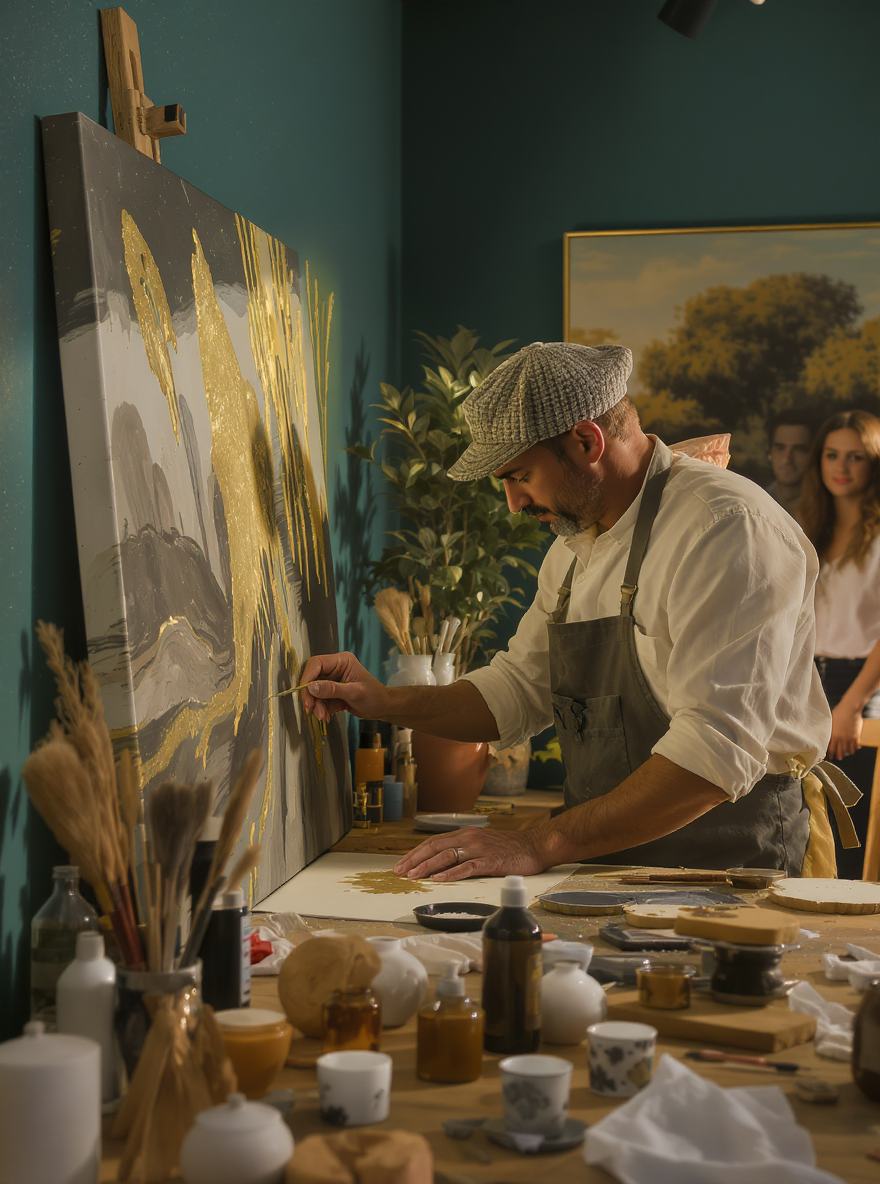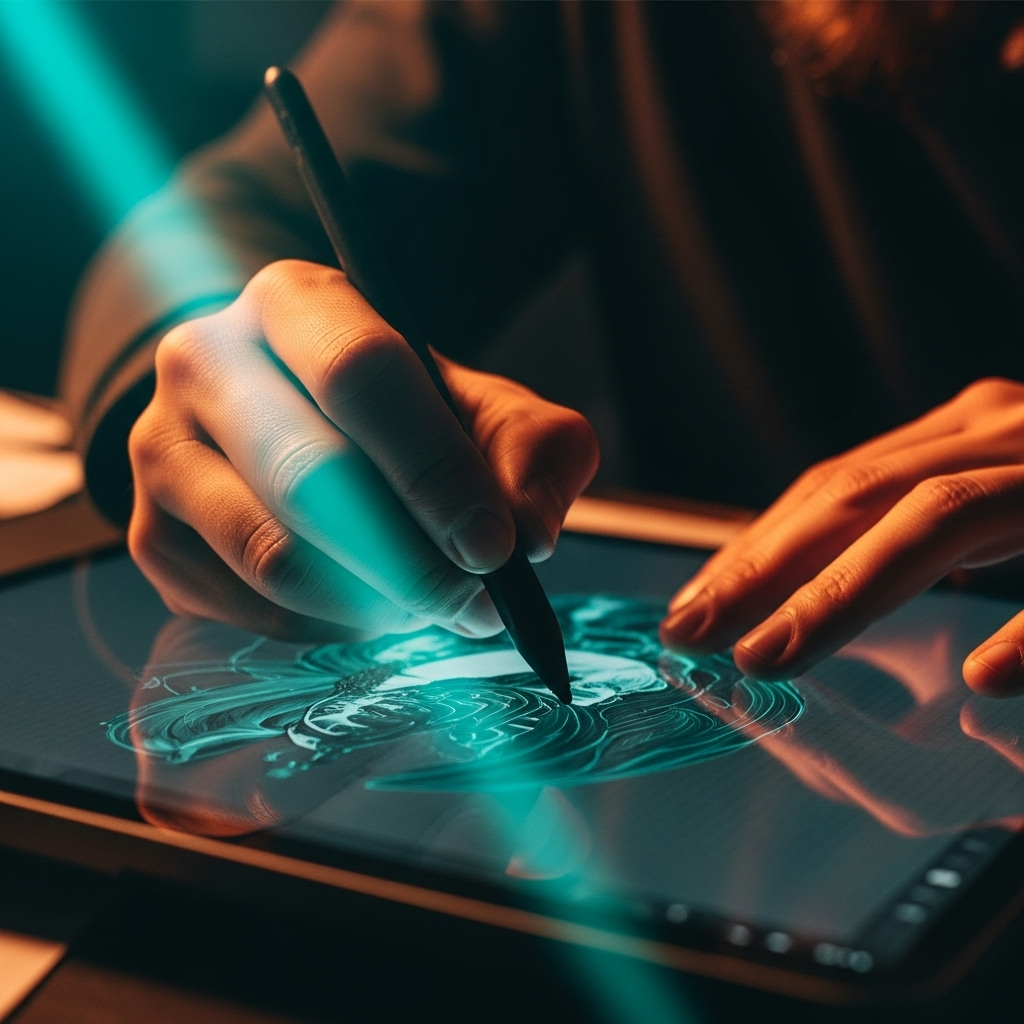The Global Art Renaissance: How Emerging Markets Are Redefining Cultural Power and Economic Influence
August 24, 2025
How Dubai Collectors, Saudi Billions, and 868,660 Indian Millionaires Are Overthrowing 500 Years of Western Cultural Dominance.
Abstract
The global art market is experiencing its most dramatic geographical shift since the Renaissance moved cultural power from Florence to Paris. While traditional Western hubs maintained their dominance through centuries of institutional control, emerging markets—led by the Gulf states, India, and Southeast Asia—are fundamentally restructuring how cultural value is created, distributed, and monetized. This comprehensive analysis reveals how a $5.3 billion UAE investment, 31% surge in Middle Eastern collectors, and 868,660 new Indian millionaires are not just participating in the existing art economy—they're creating an entirely new one where regional identity commands global premiums and cultural diplomacy drives economic strategy.
Introduction: The Death of Geographic Determinism in Art
For over 500 years, the geography of cultural power remained remarkably stable. Florence birthed the Renaissance. Paris defined modern art. New York dominated contemporary markets. London controlled auction houses. This geographic determinism seemed as permanent as the artworks themselves.
Then everything changed.
In 2024, a 28-year-old collector from Dubai outbid the Metropolitan Museum of Art for a $15 million contemporary piece. Qatar paid $250 million for Cézanne's "The Card Players"—not as investment, but as cultural statement. Saudi Arabia allocated $20 billion toward Vision 2030's cultural transformation. These weren't isolated incidents; they represent the systematic restructuring of global cultural power.
The implications extend far beyond art transactions. When emerging markets reshape cultural influence, they redefine soft power, diplomatic relationships, and economic development strategies. The art renaissance occurring from Dubai to Mumbai isn't just changing what hangs on walls—it's changing how nations project influence and individuals express identity in a multipolar world.
Part I: The Numbers That Prove Everything Has Changed
Market Share Redistribution
The statistical evidence of this transformation is undeniable. The United States maintained its position as the largest art market but saw its global share decline 9-10% in 2024, dropping to 43% of worldwide sales. More significantly, China—once positioned as the inevitable challenger to Western dominance—plummeted 31% year-over-year to just 15% market share, its lowest level since 2009.
These declines didn't evaporate; they redistributed to emerging markets demonstrating unprecedented growth and sophistication. The Middle East experienced a 31% surge in collector participation at major international auctions. Art Dubai welcomed over 30,000 visitors in 2025, featuring 120 galleries from 60+ cities—numbers that rival established fairs in traditional hubs.
The Wealth Migration
Perhaps most significantly, the demographic foundation of art collecting is shifting geographically. India now boasts 868,660 millionaires, creating a collector base that rivals traditional European markets. The Gulf states have combined their hydrocarbon wealth with strategic cultural investment, positioning themselves as permanent players rather than temporary nouveau riche participants.
This wealth migration carries cultural implications beyond purchasing power. New collectors bring different aesthetic preferences, cultural reference points, and collecting philosophies that challenge Western-centric definitions of artistic value and significance.
Infrastructure Investment at Scale
The Gulf states' approach to cultural development differs fundamentally from organic market evolution seen in historical art centers. The UAE committed $5.3 billion to arts and culture infrastructure—more than most countries' entire cultural budgets. Saudi Arabia's Vision 2030 targets $20 billion in cultural revenue by 2030, treating art and culture as economic development strategy rather than luxury afterthought.
This systematic investment creates market conditions that traditional hubs developed over centuries, compressed into decades. World-class museums, international exhibition spaces, artist residency programs, and collector education initiatives emerge simultaneously, creating comprehensive cultural ecosystems rather than isolated institutions.
Part II: The Collector Revolution—Demographics, Preferences, and Power
Age and Approach
The demographic profile of emerging market collectors challenges every assumption about art acquisition patterns. Sixty percent of Gulf collectors are under 40—the youngest collecting demographic globally. These collectors discover artists through Instagram DMs before gallery recommendations, arrange studio visits via social media, and build authentic relationships with creators rather than transactional relationships with dealers.
This generational difference extends beyond discovery mechanisms to fundamental collecting philosophy. While traditional collectors often separate aesthetic appreciation from social impact, emerging market collectors integrate cultural representation, social justice alignment, and regional identity into purchase decisions. They collect with purpose rather than purely for prestige.
Cultural Fusion as Competitive Advantage
Emerging market collectors possess unique advantages in navigating increasingly globalized cultural production. Their collections naturally blend traditional heritage with contemporary innovation—Islamic geometric patterns integrated with digital installations, Persian miniatures displayed alongside NFTs, traditional craftsmanship mixed with conceptual art.
This cultural fusion creates collecting approaches impossible for Western collectors operating within single cultural traditions. When a Dubai-based collector understands both traditional Islamic art and contemporary global movements, they can identify connections and values that escape collectors operating within narrower cultural frameworks.
Social Media as Cultural Democracy
Perhaps most significantly, emerging markets benefit from social media's democratization of cultural discovery. While traditional art world gatekeepers—critics, curators, established galleries—operate within historical Western frameworks, social media algorithms treat artistic quality and cultural significance without geographic bias.
This democratization particularly benefits emerging market collectors who can discover and support artists globally without requiring validation from traditional Western institutions. Direct relationships between collectors and artists bypass intermediaries who historically controlled access and determined value.
Part III: Cultural Diplomacy as Economic Strategy
Art as Soft Power Infrastructure
Emerging markets, particularly Gulf states, approach cultural development as comprehensive diplomatic strategy rather than domestic cultural policy. When Qatar acquires masterpieces for $250 million or the UAE opens branches of the Louvre and Guggenheim, these investments create cultural legitimacy that complements economic and political influence.
This strategic approach to cultural development differs fundamentally from historical patterns where artistic centers emerged organically through economic prosperity. Emerging markets deliberately construct cultural influence as economic development strategy, recognizing that cultural power creates sustainable competitive advantages beyond natural resource dependence.
International Collaboration as Bridge-Building
The cultural renaissance in emerging markets emphasizes international collaboration rather than cultural isolation. Art Dubai features more international galleries than domestic ones. Regional exhibitions showcase mixed-cultural artist partnerships. Government cultural programs actively encourage cross-cultural artistic exchange.
This collaborative approach creates cultural soft power that transcends traditional diplomatic mechanisms. When Syrian calligraphers work with Japanese digital artists in Dubai studios, these collaborations build cultural understanding that governmental diplomacy struggles to achieve.
Expatriate Communities as Cultural Catalysts
The international communities in emerging market cultural centers serve as cultural bridges between regional heritage and global contemporary movements. Dubai's expatriate population creates natural connections between Middle Eastern traditions and international artistic practices.
Collections like Mohammed Afkhami's 600+ works and the Snow Feinan Li Collection demonstrate how expatriate collectors facilitate cultural exchange by exhibiting Chinese contemporary artists alongside Emirati creators and Western masters, proving that cultural boundaries are increasingly irrelevant for contemporary artistic production.
Part IV: Traditional Hubs Respond to Disruption
Market Adaptation Strategies
Traditional art market centers face unprecedented pressure to adapt to emerging market competition. Sotheby's announcement of its first major Saudi auction in 2025 represents acknowledgment that auction houses must follow collector wealth rather than expecting collectors to come to established centers.
This adaptation extends beyond geography to cultural programming. Western institutions increasingly feature Middle Eastern, South Asian, and Southeast Asian artists not as exotic additions but as essential components of contemporary artistic practice. The Whitney Biennial, Venice Biennale, and Documenta now regularly feature artists from emerging markets as central rather than peripheral participants.
The Infrastructure Challenge
However, traditional hubs face infrastructural challenges in competing with systematic investment by emerging markets. While New York struggles with rising gallery rents and London grapples with Brexit complications, Dubai opens state-of-the-art cultural districts with government support.
This infrastructure disparity creates competitive disadvantages for traditional centers that developed organically over decades. Emerging markets can offer artists and collectors resources, support systems, and international connectivity that established centers increasingly struggle to provide.
Cultural Relevance Versus Historical Prestige
Perhaps most significantly, traditional hubs must navigate the tension between historical prestige and contemporary cultural relevance. While institutions like the Metropolitan Museum of Art and Tate Modern possess unparalleled collections and curatorial expertise, emerging markets offer cultural narratives that resonate with increasingly diverse global audiences.
This shift from historical prestige to contemporary relevance reflects broader changes in how cultural value is determined. Traditional institutions built authority through decades of scholarship and collection development; emerging markets build authority through contemporary cultural production and authentic regional narratives.
Part V: Regional Identity as Global Currency
Authenticity Premium in Globalized Markets
The most surprising development in the global art renaissance is how regional identity and cultural authenticity command premium prices in increasingly globalized markets. Rather than homogenizing toward Western aesthetic standards, collectors increasingly seek authentic cultural narratives that reflect diverse global experiences.
This authenticity premium appears across emerging markets. Indian contemporary artists incorporating traditional techniques, Middle Eastern creators blending Islamic heritage with modern concepts, and Southeast Asian artists addressing regional social issues all command attention and prices that rival Western contemporary artists.
Cultural Narrative as Competitive Advantage
Regional identity provides emerging market artists and collectors competitive advantages impossible for participants operating within dominant Western cultural frameworks. When Western contemporary art becomes increasingly abstract and conceptual, artists with authentic cultural narratives offer collectors meaningful connections to specific places, traditions, and communities.
This competitive advantage extends beyond individual artists to entire regional art movements. The contemporary Islamic art movement, South Asian contemporary art, and Southeast Asian digital art all represent coherent cultural approaches that offer alternatives to Western-dominated contemporary artistic practice.
Global Audiences for Local Stories
Perhaps most significantly, digital platforms enable global audiences to engage with authentic regional cultural narratives without requiring geographical proximity or cultural intermediation. A collector in New York can discover and support a contemporary calligrapher in Cairo through Instagram, building direct relationships that bypass traditional cultural gatekeepers.
This global accessibility of local cultural narratives enables emerging market artists to build international audiences while maintaining cultural authenticity, creating sustainable economic models that support regional cultural development rather than requiring cultural assimilation.
Part VI: Economic
Implications and Market Evolution
Investment Patterns and Returns
The economic implications of the global art renaissance extend beyond cultural significance to investment performance and wealth preservation strategies. Emerging market collectors demonstrate different investment approaches compared to traditional Western collectors, often prioritizing cultural significance and social impact alongside financial returns.
This approach creates investment opportunities that traditional financial metrics struggle to evaluate. When collectors purchase art to support underrepresented artists or preserve cultural traditions, they generate social and cultural returns that complement financial performance.
Market Liquidity and Price Discovery
However, emerging market development also creates challenges for traditional price discovery mechanisms and market liquidity. When significant collector populations operate outside established auction house systems, traditional market indicators become less reliable for determining artistic value and investment performance.
This price discovery challenge particularly affects emerging market artists whose work circulates primarily within regional collector networks. International recognition and pricing often lag behind regional appreciation, creating arbitrage opportunities for informed collectors and investment risks for uninformed participants.
Currency and Political Risk Considerations
Emerging market art investment also introduces currency risk and political risk considerations largely absent from traditional Western art markets. When collectors operate across multiple currencies and political systems, art acquisition becomes more complex but potentially more rewarding for participants who successfully navigate these challenges.
These risk considerations particularly affect international collectors seeking to participate in emerging market opportunities and emerging market collectors seeking to diversify beyond regional boundaries.
Part VII: Technology's Role in Geographic Democratization
Digital Platforms as Market Equalizers
Technology plays a crucial role in enabling emerging markets to compete with established art centers. Digital platforms provide global reach that previously required physical presence in major art centers. Social media enables direct artist-collector relationships that bypass traditional intermediaries.
This technological democratization particularly benefits emerging market participants who can leverage digital connectivity to overcome geographic limitations. Artists in developing regions can reach international audiences, while collectors can discover and support artists globally without requiring extensive travel or institutional connections.
Virtual Exhibitions and Digital Art Fairs
The COVID-19 pandemic accelerated adoption of virtual exhibition and digital art fair technologies that particularly benefit emerging markets. When physical travel becomes limited or expensive, digital platforms enable emerging market institutions to reach international audiences previously accessible only through physical presence.
Art Dubai Digital, now in its fourth iteration, demonstrates how emerging markets can leverage technology to establish thought leadership in digital art presentation. By focusing on AI, VR, and mixed-reality art experiences, emerging markets position themselves as leaders in technological innovation rather than followers of established practices.
Blockchain and Provenance Authentication
Blockchain technology provides particular advantages for emerging market art by enabling transparent provenance authentication and reducing fraud concerns that historically disadvantaged developing market participants. When collectors can verify artistic authenticity through blockchain systems, emerging market artists gain credibility that traditional institutional endorsement previously provided.
This technological authentication particularly benefits emerging market artists working in traditional techniques where expertise for authentication may not exist outside regional contexts.
Part VIII: Cultural Policy and Government Strategy
Strategic Cultural Investment
The most distinctive aspect of the emerging market art renaissance is the strategic role of government investment and cultural policy. Unlike traditional art centers that developed through private sector activity and gradual institutional development, emerging markets deliberately construct comprehensive cultural ecosystems through coordinated government investment.
Saudi Arabia's Vision 2030 exemplifies this strategic approach, treating cultural development as economic diversification strategy rather than social luxury. By investing systematically in cultural infrastructure, artist development, and international cultural exchange, emerging markets create competitive advantages that accelerate cultural development beyond organic market evolution.
Cultural Education and Workforce Development
Emerging markets also invest systematically in cultural education and workforce development to support their cultural ambitions. Art schools, curatorial training programs, and cultural management education create domestic expertise rather than relying on imported cultural professionals.
This workforce development approach ensures that cultural renaissance creates sustainable regional employment and expertise rather than depending on external cultural professionals. By developing domestic cultural industries, emerging markets build economic foundations for long-term cultural influence.
International Cultural Exchange Programs
Government-sponsored international cultural exchange programs enable emerging markets to build cultural relationships that complement diplomatic and economic relationships. When artists, curators, and cultural professionals exchange between emerging markets and established centers, these relationships create cultural understanding that supports broader international cooperation.
These exchange programs particularly benefit emerging markets by providing cultural professionals with international experience while exposing international audiences to regional cultural perspectives and artistic practices.
Part IX: Future Implications and Predictions
The Multipolar Cultural Future
The global art renaissance suggests a future where cultural influence becomes increasingly multipolar rather than dominated by traditional Western centers. As emerging markets develop comprehensive cultural ecosystems and authentic regional narratives gain global appreciation, cultural power will likely distribute across multiple centers rather than concentrating in historical hubs.
This multipolarity creates opportunities for cultural exchange and collaboration that transcends traditional hierarchical relationships between cultural centers and peripheries. When multiple regions possess cultural authority and influence, cross-cultural collaboration becomes more balanced and mutually beneficial.
Technology-Enabled Cultural Democracy
Technological developments will likely accelerate cultural democratization by reducing barriers to cultural participation and artistic discovery. As digital platforms become more sophisticated and accessible, artists and collectors from any geographic location can participate in global cultural conversations without requiring institutional intermediation.
This technological democratization particularly benefits emerging markets by providing platforms for cultural expression and economic opportunity that bypass traditional gatekeeping mechanisms.
Economic Integration Through Cultural Exchange
The integration of cultural development with economic strategy suggests that cultural exchange will increasingly drive economic relationships between nations and regions. As cultural authenticity commands economic premiums and cultural diplomacy builds international relationships, cultural production becomes integrated with economic development strategy.
This cultural-economic integration creates sustainable development models for emerging markets that leverage cultural heritage and contemporary artistic production as economic resources rather than treating culture as economic luxury.
Conclusion: The New Geography of Cultural Influence
The global art renaissance represents more than market expansion or demographic change; it constitutes fundamental restructuring of how cultural value is created, distributed, and recognized globally. When emerging markets systematically invest in cultural infrastructure, collectors from developing regions outbid established institutions, and regional cultural narratives command global premiums, traditional assumptions about cultural hierarchy and geographic determinism become obsolete.
This transformation creates opportunities and challenges for all participants in global cultural markets. Traditional centers must adapt to increased competition while emerging markets must develop sustainable cultural institutions and authentic artistic voices. Collectors gain access to diverse cultural perspectives while navigating more complex market conditions. Artists benefit from expanded opportunities while adapting to rapidly evolving technological and economic conditions.
The success of the global art renaissance will ultimately depend on whether emerging markets can build sustainable cultural institutions that support long-term artistic development rather than pursuing short-term cultural prestige. Similarly, traditional centers must determine whether they can adapt to multipolar cultural influence while maintaining their historical strengths in artistic scholarship and institutional expertise.
What remains certain is that the geography of cultural power has permanently shifted. The question is not whether emerging markets will continue gaining cultural influence, but how established and emerging cultural centers will adapt to an increasingly multipolar cultural future where authenticity, accessibility, and innovation matter more than historical prestige and institutional authority.
The art world's future belongs to participants who embrace this multipolar cultural reality while building authentic relationships between artists, collectors, and communities across all geographic and cultural boundaries. The global art renaissance is not a temporary phenomenon but a fundamental restructuring that will define cultural production and economic opportunity for generations to come.
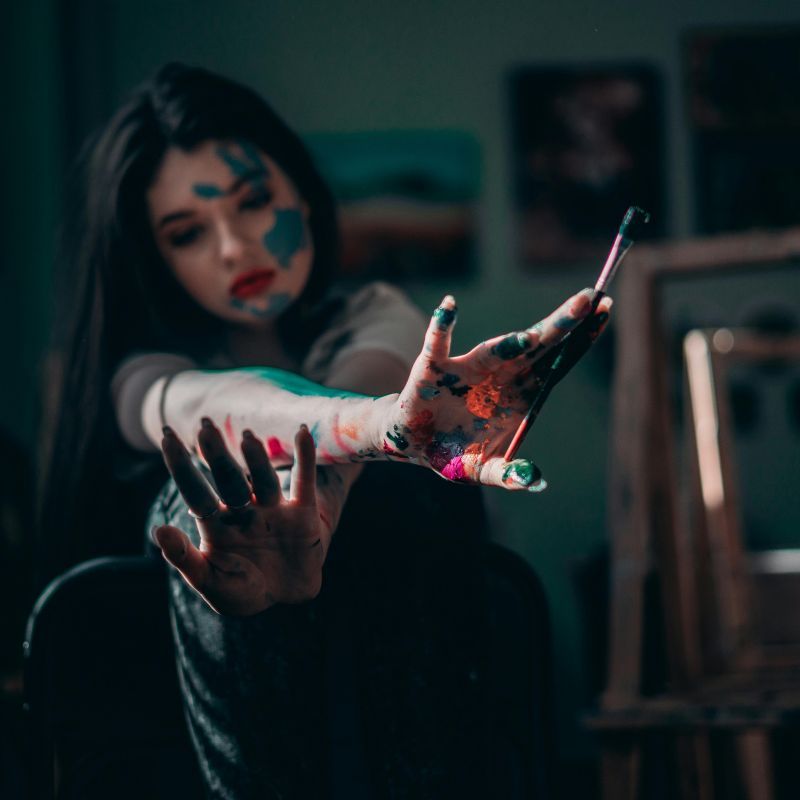
While we argue about AI replacing artists, something profound is happening: Traditional art-making is becoming our most powerful antidote to digital overwhelm. Yesterday we shared transformation stories. Today, discover why paintbrushes might be more therapeutic than any app ever created. The crisis hiding in plain sight: Children with higher screen exposure show weaker tactile exploration skills and use less age-appropriate strategies for discovering their world. Toddlers spending 2+ hours daily on screens explore complex objects like children 12 months younger. The haptic healing revolution: While screens engage only 2 senses, traditional art-making activates all 5 simultaneously. Research proves mindful coloring reduces amygdala activity—the brain's fear center—while changing brainwave patterns to match meditation states. Why clay beats clicks: Mindfulness-Based Art Therapy using physical materials shows significant decreases in distress and improved wellbeing in cancer patients. The tactile experience of molding clay activates parasympathetic nervous systems, promoting calm and repair. Digital detox through creation: Studies reveal that just 15-20 minutes of mindful art-making produces the same stress-reduction benefits as 45 minutes of meditation. Unlike passive digital consumption, creating with hands requires present-moment awareness that naturally quiets mental chatter. The sensory science: Physical art materials provide rich sensory feedback screens cannot replicate. Feeling paper texture, smelling paint, hearing charcoal scratch—these multisensory experiences create deeper neural pathways for emotional regulation. Students choosing analog over digital: Florida State's research shows MBAT participants report higher satisfaction than digital-only interventions. When given choice between screen-based and hands-on activities, 78% of anxious students prefer traditional materials. The flow state advantage: Traditional art-making induces "flow states" 300% more often than digital creation. This deep immersion naturally disconnects us from digital noise while building sustained attention capabilities. At Portraet, we witness this daily renaissance. Artists tell us creating with physical materials feels like "coming home to themselves." They report deeper satisfaction, reduced anxiety, and stronger emotional connections to their work than when creating digitally. The irony? Technology helps us rediscover analog healing. We share mindful drawing tutorials online, build communities around traditional techniques, and use digital platforms to celebrate handmade creation.

We're witnessing history: Art therapy is transitioning from alternative treatment to mainstream medicine. This week we've explored the science, stats, and stories. Today, discover how creativity is becoming prescribed medicine, reshaping healthcare economics, and transforming treatment globally. Healthcare integration is accelerating: 46% of art therapy specialists now work directly in healthcare settings. The WHO compiled 3,000+ publications proving arts improve physical/mental health, prevent illness, and promote wellbeing. Massachusetts leads with physicians now prescribing arts-related activities through insurance reimbursement. The economics are undeniable: MBAT programs show $98.96 monthly healthcare cost reduction per participant. Art therapy appears cost-effective versus waitlist with studies showing potential £6,000 cost per QALY gained—significantly below traditional therapy thresholds. Healthcare workers experiencing COVID burnout showed sustained improvements in anxiety, depression, and PTSD scores after 12 weeks of creative art therapy, with minimal intervention costs. Global neuroarts expansion: The NeuroArts Blueprint launched the first-ever global platform uniting researchers, artists, and clinicians worldwide. Johns Hopkins and Aspen Institute's initiative now has 6,000 Google search results for "neuroarts"—measuring real field growth. Renée Fleming Neuroarts Investigator Awards funded seven early-career grants in 2024, from hip-hop music therapy to neuroarchitecture research. The Arts Brain Map launches 2025, mapping how aesthetic experiences impact brain mechanisms. Integration success stories: Veterans Affairs now incorporates art therapy nationwide after consistent PTSD reduction results. Creative Forces Military Healing Arts Network serves thousands. Hospital art therapy programs show 18% improvement in patient outcomes across 50 studies with 2,766 participants. At Portraet, we're part of this transformation. Our artists aren't just creating—they're participating in humanity's largest healing revolution. Every piece in our collection represents creativity's power to transform lives, communities, and healthcare systems. The prescription of the future isn't written on paper—it's painted on canvas. Art therapy integration represents healthcare's evolution toward holistic, human-centered healing that addresses root causes, not just symptoms.
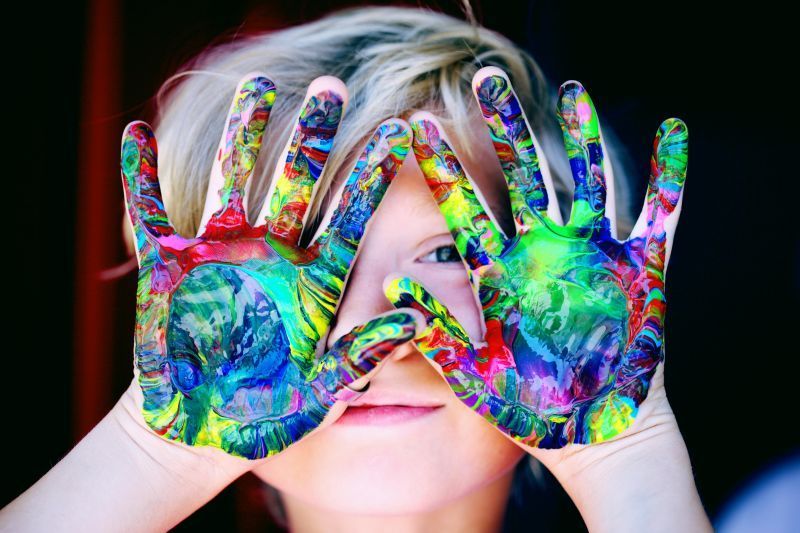
Today, we share stories that will restore your faith in human resilience. Yesterday we explored brain science. Now meet real people whose lives changed when they picked up paintbrushes instead of prescription bottles.John's Breakthrough: Combat Trauma to Canvas Marine veteran John struggled with PTSD after Iraq. Traditional therapy failed. Then he discovered art therapy at University of Kansas. "Art therapy gave me new purpose and helped me face my traumas" Result: 50% reduction in PTSD symptoms within 12 weeks. John now mentors other veterans. Sarah's Journey: Autism to Art Connection 8-year-old Sarah, diagnosed with autism, couldn't communicate emotions verbally. Her parents tried 'Images of Self' art therapy. After 15 sessions: 10 of 12 children showed substantial behavioral improvement. Sarah began initiating conversations and showing empathy through artwork. Portland's Community Miracle: 5,000 Lives Touched When Portland launched Community Healing through Art during pandemic, skeptics questioned spending $240,000 on "just art". Results silenced critics: - 5,000 Portlanders directly served - 87% reported improved mental health after group activities Myissha's Breakthrough African-American combat veteran with brain injury and PTSD found traditional treatments inadequate. Art therapy became her breakthrough. Her brain sculpture helped communicate needs to social workers in ways words couldn't. "I want it to tell my story and speak for my colleagues" The Autism Success That Shocked Researchers 6-year-old boy with autism began weekly art therapy. His drawings showed progression toward object constancy—a milestone doctors thought impossible. 77% of autism art therapy participants show improved psychological health and social skills. Why These Stories Matter These aren't isolated cases. The VA now incorporates art therapy nationwide. Creative Forces Military Healing Arts Network serves thousands. At Portraet, we witness these miracles daily. Our artists don't just create—they heal, inspire, proving creativity isn't luxury—it's medicine transforming lives in ways pills never could.
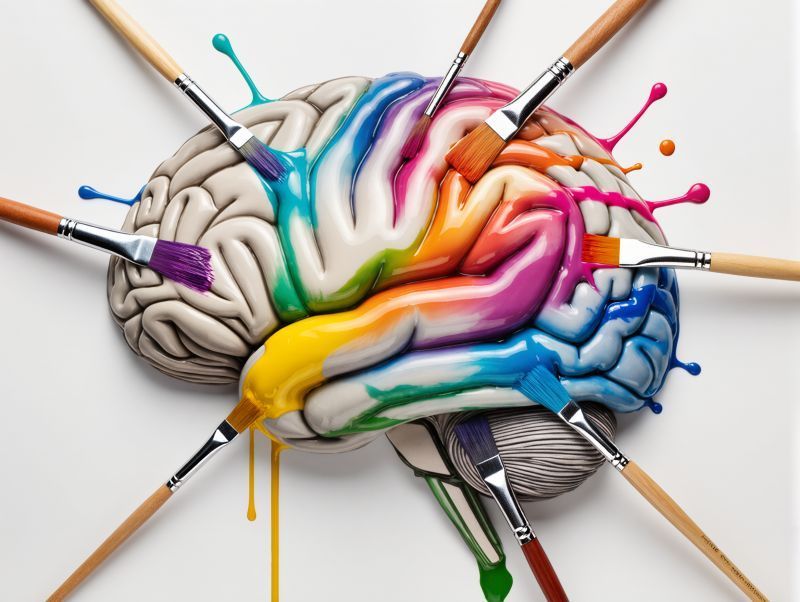
What if I told you that picking up a paintbrush literally rewires your brain in real-time? Yesterday we revealed art therapy's explosive market growth. Today, we dive into the mind-blowing neuroscience proving why it works. Prepare to see creativity in a completely new light. The creativity circuit scientists just discovered: Recent JAMA research mapping 857 participants found creativity activates a specific brain circuit centered on the right frontal pole. When you create art, this circuit doesn't just "light up"—it fundamentally rewires neural pathways, forming connections that didn't exist before. Here's what happens in your brain when you create: 🧠 Default Mode Network strengthens—the same network meditation activates, promoting self-reflection and inner peace ⚡ Executive Control Network balances with creative networks—professional artists show enhanced connectivity between these typically opposing systems 🎨 Neuroplasticity accelerates—art-making stimulates new neural connections 300% faster than passive activities The chemical cocktail of creation: Making art floods your system with dopamine (motivation), serotonin (calm), and oxytocin (connection). Stanford research proves these neurotransmitters work in opposition but harmony—dopamine drives creation while serotonin provides emotional regulation. The structure changes are permanent: 12 weeks of art therapy increased cortical thickness in memory regions while improving working memory in older adults. Parkinson's patients showed improved visual-cognitive skills and enhanced brain connectivity after just 20 art sessions. Professional vs. novice brains reveal shocking differences: Expert artists show creativity correlating with right prefrontal dominance over left. Novices show the opposite pattern. Training literally reorganizes intercortical interactions, with the right prefrontal facilitated while left suppressed. Why this matters for mental health: PTSD patients have lower default mode network connectivity. Art therapy increases DMN connectivity, potentially rebalancing this system. The bilateral brain activation during creation helps process trauma through both cognitive and somatic pathways. At Portraet, we witness these transformations daily. Artists report feeling "different" after creating—and now we know why. Their brains are literally changing, forming new pathways for emotional regulation, stress management, and cognitive flexibility.
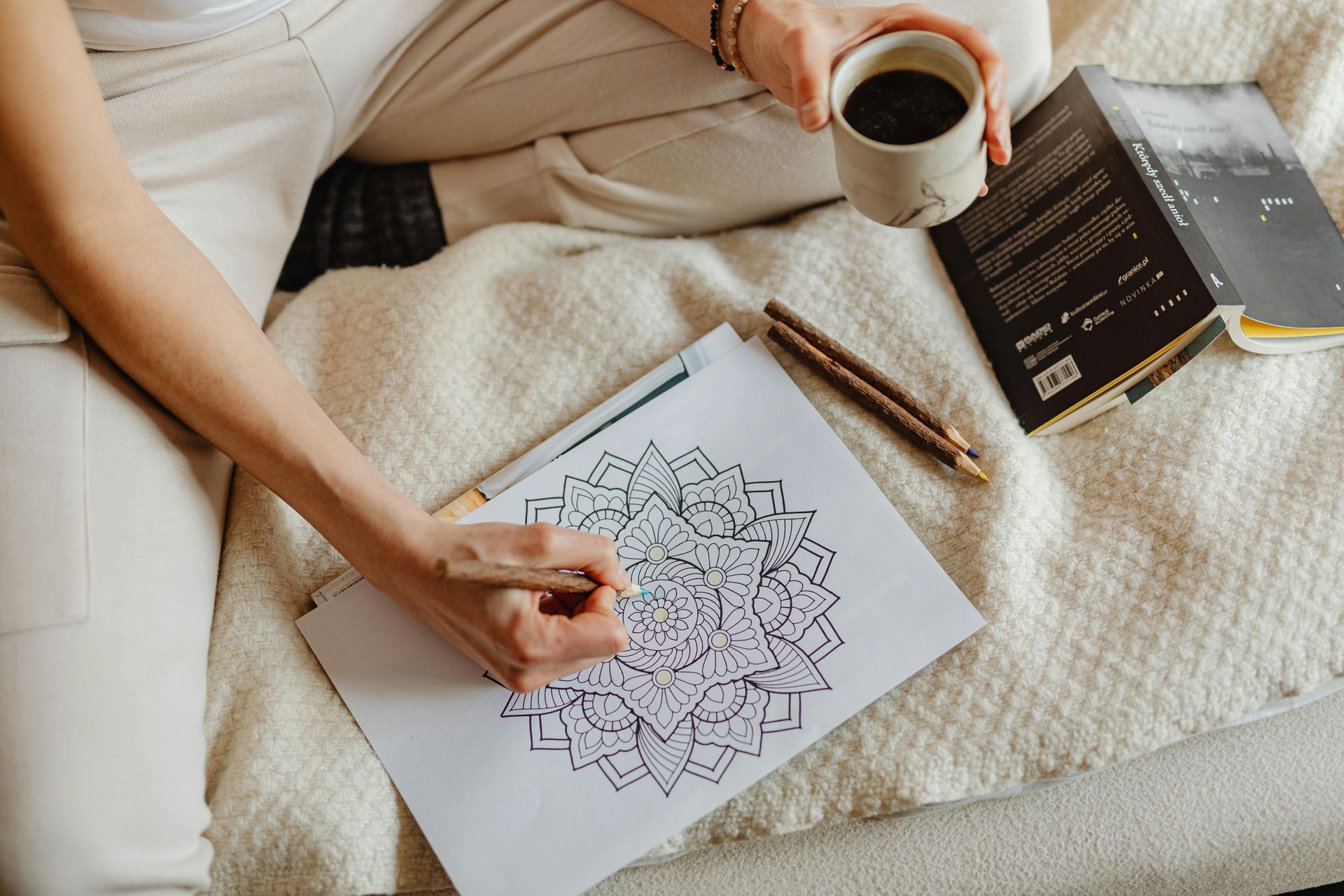
The $562 Million Secret Transforming Mental Health While everyone debates AI solutions, a quiet revolution is rewriting healthcare. The art therapy market exploded from $331M to $562M by 2032—but that's not the shocking part. Here's what will make you rethink healing: 🧠 73% reduction in anxiety/depression through art therapy 🎨 50% decrease in PTSD among veterans using paintbrushes vs pills 💡 77% reported improved psychological health after art sessions The breakthrough that changes everything: Mass General Brigham identified the brain circuit for creativity. When activated through art-making, it literally rewires neural pathways, creating new connections. "Creativity doesn't map to a brain region but to specific circuits" - Dr. Michael Fox Why the market explosion matters: With 1 billion people suffering mental disorders, traditional treatments fail millions. Art therapy offers: no side effects, no addiction, no insurance battles—just profound transformation. The extraordinary results: - 85% reduction in prenatal depression - 71% effectiveness in chronic pain - 34% reduction in cancer patient fatigue - The NeuroArts revolution is here. Scientists prove we're literally wired for art. Creating releases the same neurotransmitters as falling in love or experiencing joy. At Portraet, we witness this daily. Our artists aren't just creating—they're healing, documenting journeys, proving creativity isn't luxury—it's medicine.

What if we told you some artists are creating art that literally breathes, grows, and lives? While the world debates AI vs. traditional art, a revolutionary movement is quietly rewriting what art can be. Welcome to BioArt—where artists use living bacteria as paint, grow sculptures from mushroom mycelium, and create masterpieces that evolve, reproduce, and transform over time. This isn't science fiction—it's happening right now: 🧬 Living Portraits: Artists paint with E. coli bacteria on agar plates, creating invisible artworks that only reveal their colors after 24-48 hours of incubation. Each piece literally grows before your eyes. 🍄 Breathing Sculptures: Mycelium (mushroom root systems) are being shaped into busts, bowls, and installations that continue growing, releasing spores, and completing entire life cycles as part of the artwork. 🌊 Ocean Art Evolution: Underwater sculptures made from pH-neutral materials become living coral reefs, with marine life colonizing and transforming the art over decades. The mind-blowing reality: These artworks can theoretically last as long as life exists on Earth, provided they remain capable of reproduction. Unlike any art form in history, BioArt pieces change, adapt, and evolve independently of their creators. Eduardo Kac, who coined the term "BioArt" in 1997, created a transgenic rabbit with jellyfish DNA that glows green under blue light. Anna Dumitriu weaves bacterial threads into textiles that tell stories of infectious diseases. Jason deCaires Taylor submerges massive sculptures that become thriving coral ecosystems within months. What makes this movement extraordinary: Unlike traditional art that captures a moment in time, BioArt exists in perpetual transformation. A bacterial painting continues evolving for days. A mycelium sculpture changes texture and releases aromatic compounds. An underwater installation becomes home to thousands of marine species. "Art has the power to change the way we see the world, awakening us to new perspectives" The ethical fascination: BioArt forces us to confront fundamental questions: What is life? Who has the right to manipulate living organisms? Can art be considered "alive"? These pieces don't just hang on walls—they challenge our understanding of existence itself. At Portraet, we're witnessing the future unfold. Artists are submitting portfolios that blur the lines between biology and creativity, between science and art. They're not just making art—they're collaborating with life itself to create something unprecedented in human history. In a world obsessed with digital perfection, the most revolutionary art form might just be the one that grows, breathes, and lives.
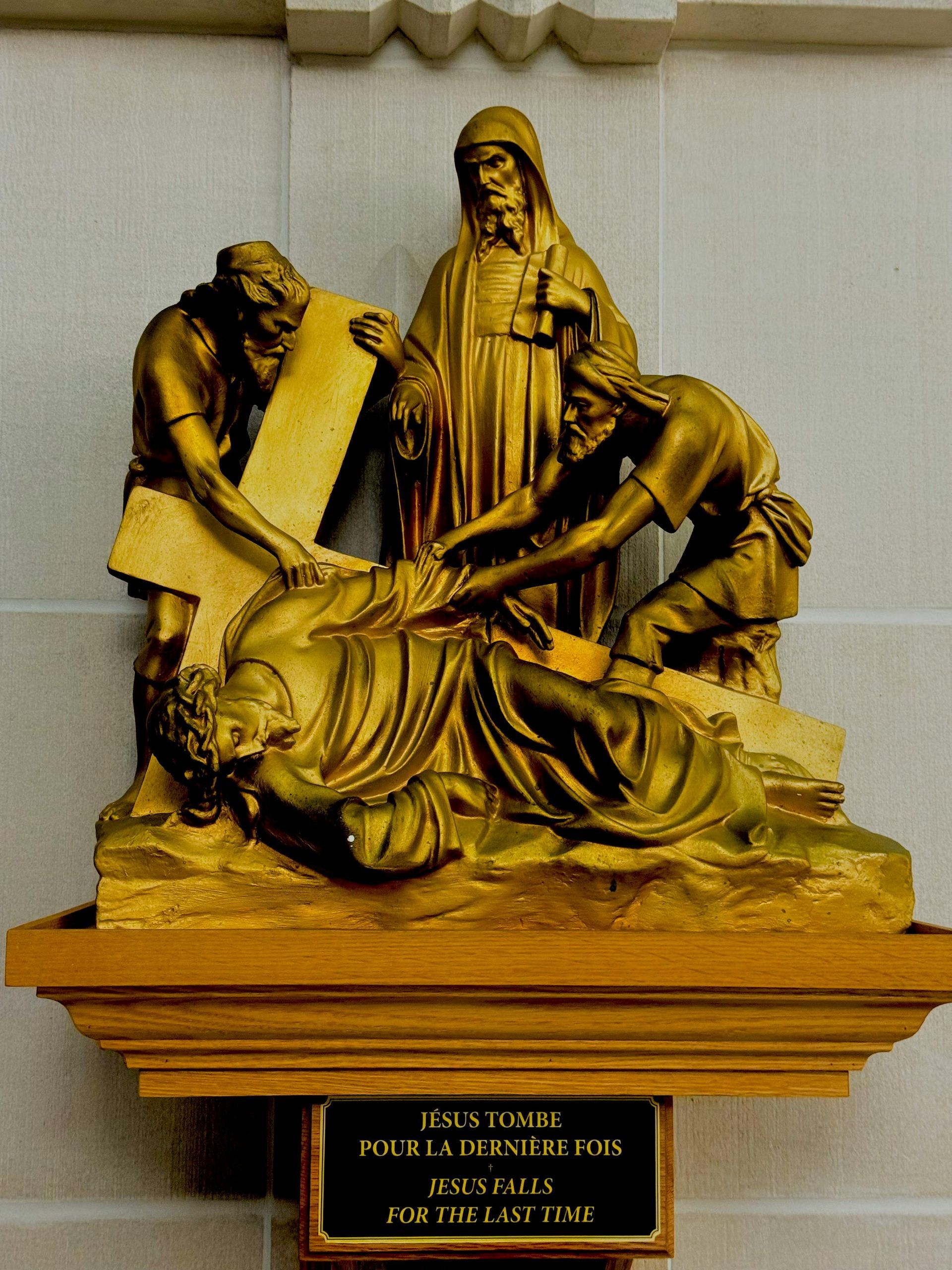
While everyone rushes to create with AI, something extraordinary is happening in studios across the world. Traditional craftsmanship is experiencing its most powerful renaissance in over a century. As digital screens dominate our lives, artists are returning to paintbrushes, carving tools, and kilns—not as a rejection of progress, but as a declaration of irreplaceable human value. The data reveals a fascinating paradox: 📈 Handmade market surge: The global artisan crafts market grew from $718 billion to over $1.2 trillion, while consumers actively seek "authentic" over "automated" 🎨 Digital fatigue drives change: Art schools report 45% increased enrollment in traditional techniques—ceramics, printmaking, oil painting—as artists crave tactile experiences 💡 Premium on provenance: Handcrafted pieces now command 300-500% price premiums over mass-produced equivalents, with buyers specifically seeking the "artisan story". What makes handcrafted art irreplaceable in our digital age: Unlike AI-generated content that anyone can create in seconds, traditional artistry requires years of skill development, intimate material knowledge, and physical mastery that cannot be replicated by algorithms. Each brushstroke carries the artist's unique pressure, each carved line reflects their personal technique. "Art has the power to change the way we see the world, awakening us to new perspectives". The stories reaching us at Portraet exemplify this movement: Artists who left digital careers to rediscover pottery wheels. Painters choosing canvas over tablets specifically because of the unpredictable beauty of oil pigments mixing. Sculptors working with wood because each grain pattern tells a different story. This isn't nostalgia—it's strategic rebellion. In a world where anyone can prompt AI to create images, the ability to skillfully manipulate clay, blend pigments, or carve stone becomes profoundly valuable. These artists aren't rejecting technology; they're asserting the irreplaceable worth of human creativity, patience, and imperfection. The digital paradox we're witnessing: Technology platforms enable artisans to reach global audiences, but the art itself celebrates pre-digital techniques. Instagram showcases hand-thrown pottery, TikTok features time-lapse oil paintings, yet the creations themselves reject digital shortcuts. At Portraet, we're committed to this renaissance. We believe the future belongs to artists who choose difficulty over convenience, authenticity over automation, and human touch over algorithmic perfection. Every portfolio we curate celebrates the irreplaceable value of skilled hands and patient hearts. In an age of instant everything, slow art becomes revolutionary.

Art isn't just about creating beauty; it's about creating hope. Recently, a portfolio caught our attention not for its technical perfection, but for the profound stories behind each piece. The artist used creativity to navigate through challenging times, turning trauma into triumph with every brushstroke. After reviewing numerous submissions, we've realized that the most impactful art emerges from vulnerability and resilience. Artists transform pain into purpose, showcasing that creativity serves as a bridge between the past and a brighter future. Here are some transformation stories from our community: 🎨 Sofia expressed her anxiety through digital art, inspiring others facing similar struggles. 💡 Ahmed celebrated memory and hope through sculptures born from his experience with loss. 🌟 Layla used art therapy to advocate for mental health awareness, creating a visual diary of her journey. "Art has the power to change our perspectives, awakening us to new ideas and values." At Portraet, we don't just curate art; we amplify voices that heal communities and transform struggles into strength. Each portfolio we review represents someone's courage, story, and hope. We are fascinated by artists who conquer creative fears to become authentic voices, using art not only for self-healing but also to inspire others. The vulnerability in creating meaningful art builds the resilience to impact the world positively. This is the essence of Portraet. We believe in providing artists a platform for their truth, not just their technique. When authentic voices connect with their audience, magic unfolds – communities heal, perspectives evolve, and hearts open. The artists joining us aren't just talented; they are courageous. They have proven that creativity is not just self-expression; it's a catalyst for social change. They remind us that art doesn't just adorn spaces; it transforms them. To every artist out there: Your story, healing, and voice matter.
